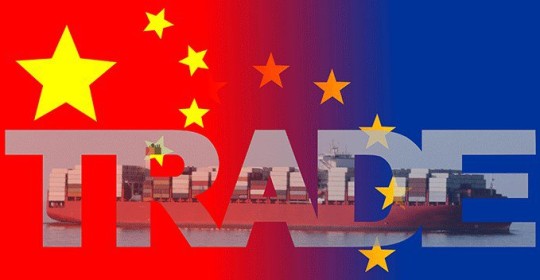
China export downturn ‘set to continue into 2016’
Weakening of euro against the US dollar-pegged Yuan has tipped already weak European demand into negative territory, observes Bimco analyst
The downturn in export markets from China into Europe will plague the container shipping industry for the rest of 2015 and into 2016, according to one leading analyst.
The latest import and export figures from Hong Kong and China made grim reading, but forward indictors onnew export orders from Chinese factories are perhaps even more worrying for container shipping lines.
Peter Sand, chief shipping analyst at Bimco, said exports out of China specifically, and Asia in general, had been particularly weak so far in 2015 due to intra-regional issues led by China, and extra-regional issues led by Europe.
“Firstly, the weakening of the Euro against the US dollar-pegged Yuan has tipped already weak European demand into negative territory, especially the demand from the southernmost parts of Europe, which has limited imports significantly as overall consumer spending has been low,” he told Lloyd’s Loading List.com.
“Containerized goods imported into Europe from the Far East dropped by 4.2% year-on-year in H1 2015. This is toxic news for the container shipping market that needs volume growth on the high volume trade lanes into Europe and the US in order to keep the cascading of tonnage going without hurting the freight market too much.
“As volumes have now contracted while supply has gone up quite steeply, Far East to Europe freight rates are in lossmaking territory. At the same time, literally all of the other SCFI [Shanghai Containerized Freight Index] routes are currently at their lowest levels since 2009.”
Sand said this had prompted Asian economies with substantial export industries – led by China – to re-tune their growth engines to focus more on domestic consumption and less on investments and infrastructure construction. “This has caused the region’s driver, China, to change its imports too, and this is where other parts of Asia get hurt.
“A lot of headwinds are visible, and the very weak global trade outside Asia too is making a tough situation slightly more difficult.”
He also argued that a ”new normal” – in which economic growth resulted in lower respective growth in world trade than was previously the case – had emerged, and this was apparent in the current peak season, which was “below par”. He added: “Rates are low and volumes are still lacking as no real turnaround is clearly visible.
“What is needed is a Europe that grows much more strongly. After all, the EU represents the largest economic zone in the world, a clear driver behind the next upturn, but not as long as the recovery is still not reached – and the longer it takes the lower the future growth potential also gets.”
In contrast to Europe, he said transpacific trade was offering lines some hope. “Volumes into USEC (the US east coast) have been very strong this year, so the US doesn’t seem to represent an issue currently,” he said. “The postponed interest rate hike indicates all is not as good as we hoped for in the US, but that issue is not as negative as the issues in Europe.”
Image: Shutterstock.com
Leave a reply →